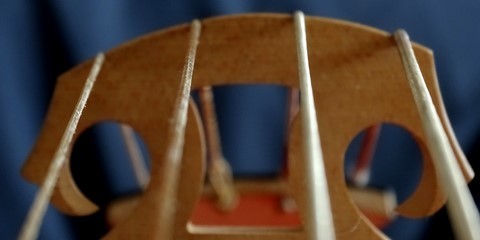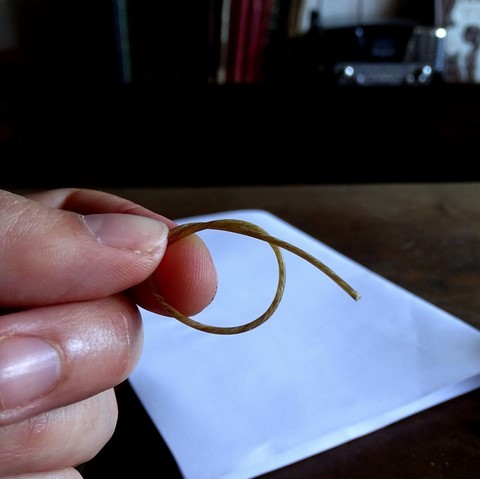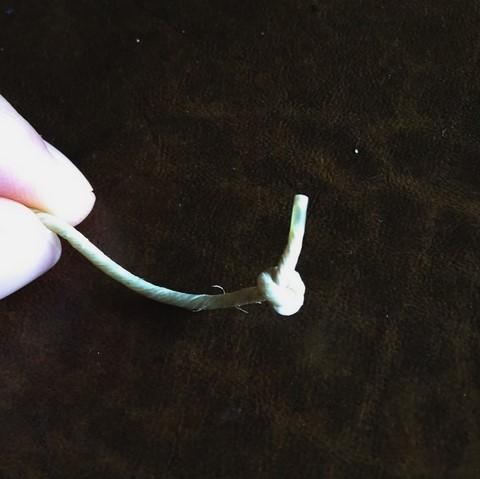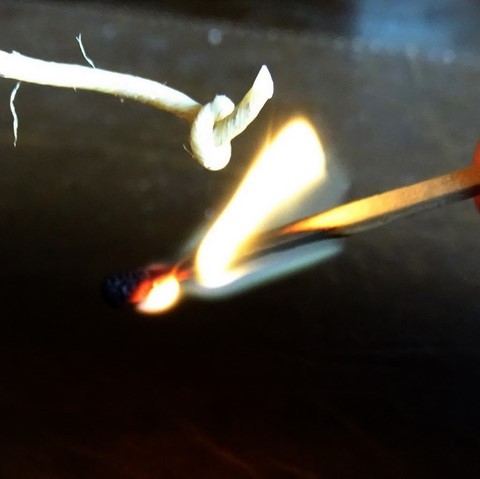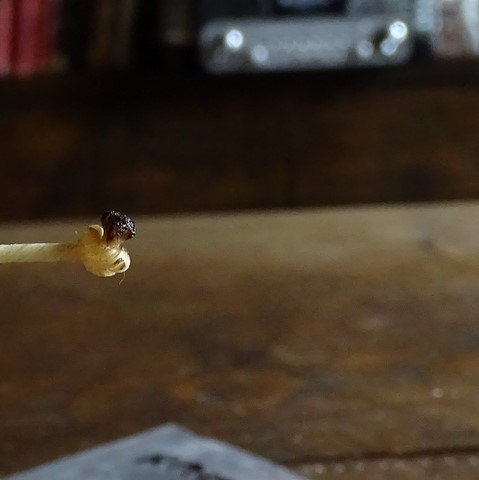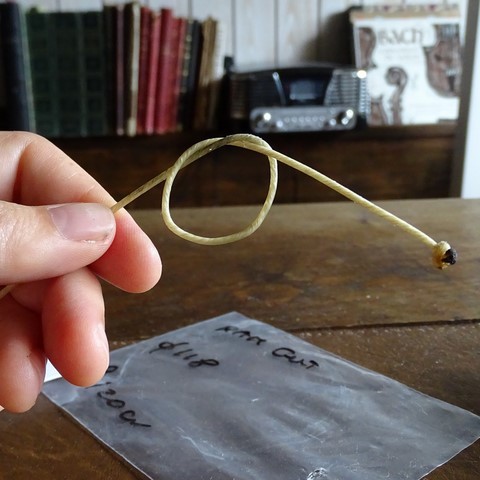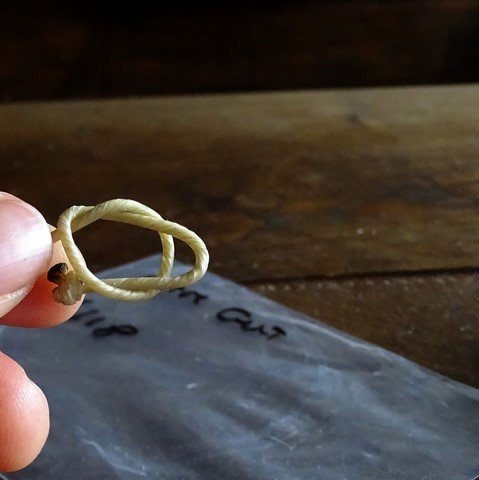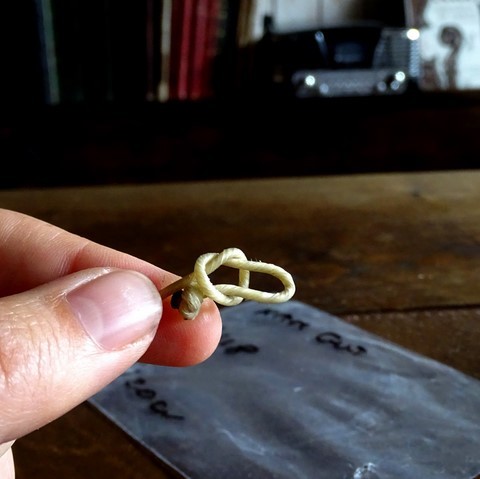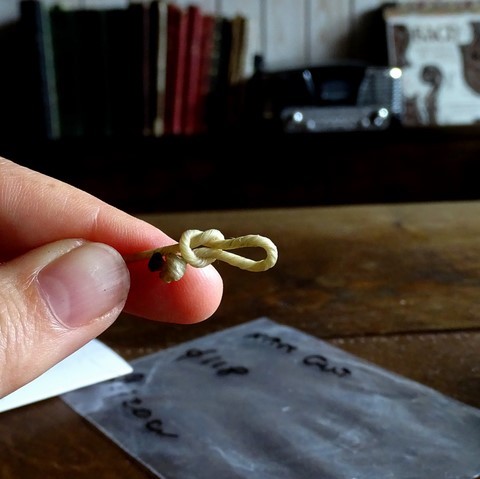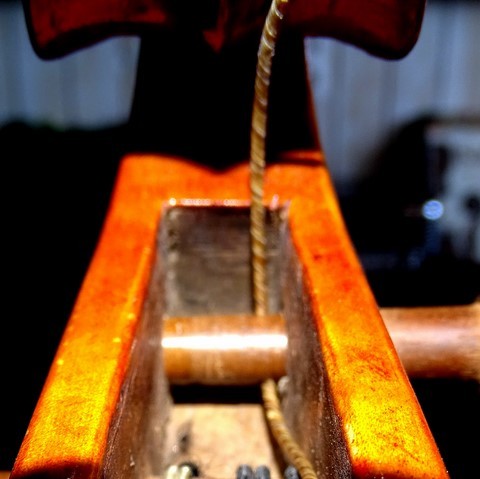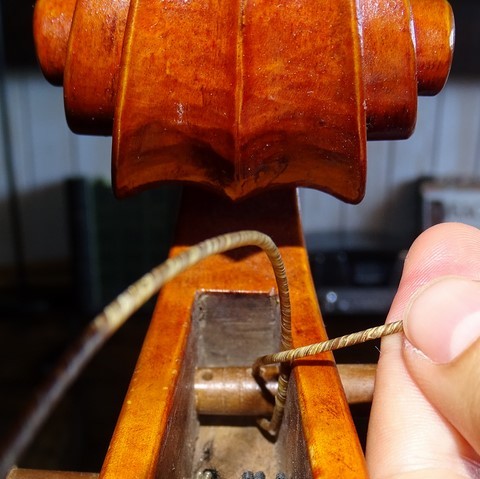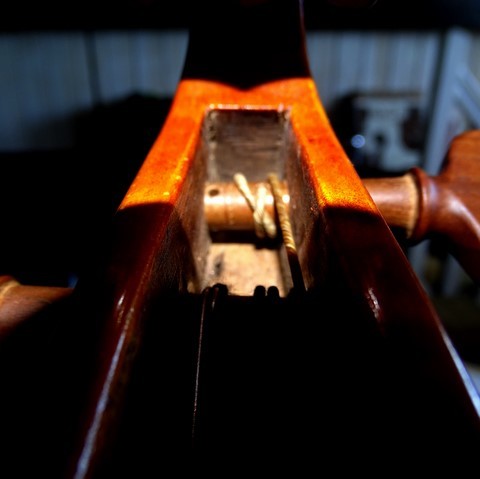Cordes en boyau pur et filetées
les cordes boyaux
Choosing the strings
Playing on guts strings is a journey, I share ideas and comments based on my own experience and research but I encourage you to make your own research on the topic.
Understanding tension and forces on your instrument will help you find the best strings for your set-up. Tension is a word often used and heard, but it is also something we feel when we play.
mass - DENSITY
The mass of a string is the amount of matter contained by the string.
- The matter of the string: plain guts
- Density of the gut: number of Kg/m³
tension - tension force -
The tension force is the force that is transmitted through the string when it is pulled tight by forces acting from opposite ends. The tension force is directed along the length of the string and pulls equally on the objects on the opposite ends of the string.
(A tension force is measured in Newtons, the newtons are then converted in Kg-force : One kilogram is equal to 9.81 Newtons.)
How to define the TENSION-force and the diameter of the string needed for your instrument?
Which diameter ?
The thickness of the plain guts string depends on the string length of the cello for the pitch and the tension force needed.
Very thin string may be too meticulous and picky, and will break easily,
Very thick may be dull and hard to put into vibration.
How much tension force does your instrument need?
For example, you string lentgth is 69cm, you tune in 415, if you play an A string of a diameter of 1.20, the tension force of the string is be 12 kg force etc.
Are 12kg enough or too much for your cello to sound well?
To know if you need more or less tension force on your string, you can increase the tension of the string (go sharper) and see if it reacts better, then do the opposite.
Note: an important pressure on the sound-board might damps the sound if the bridge is too high.
Calculer le diametre de ses cordes
comparasion To understand the consequences of the string length and the Tension-force
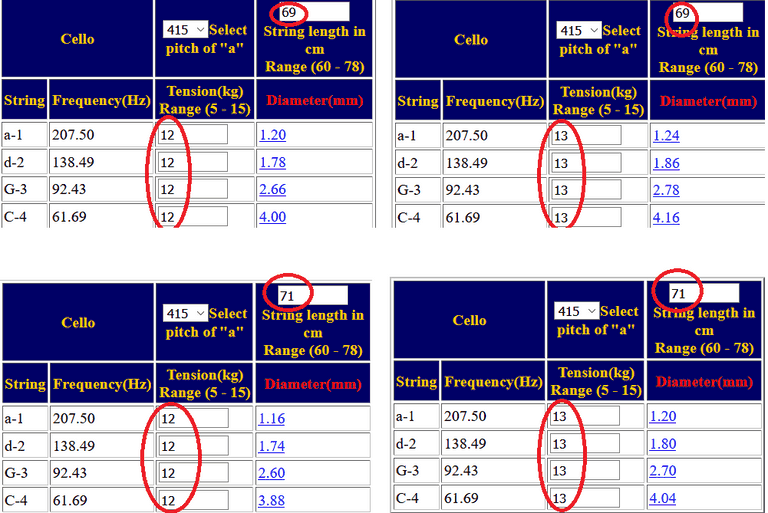
Calculer le diametre de ses cordes
I. Mon Experience
cordes du projet
Mon premier jeu a été posé et choisi par Valentin Oolmüller - Pure-Corde à Potsdam.
- I: Toro sheep gut diskant by Toro
- II: High twist Darmsaite
- III: Ø 2,70mm - Pure "triple"
- IV: Silver wound gut string Equiv. Ø 4 mm
les cordes
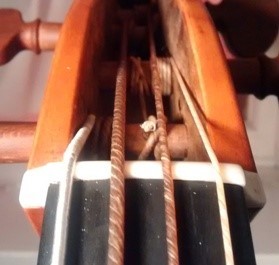
Jeu par Pure Cordes, Potsdam
COrdes utilisées pour l'enregistrement
II : Liedmeir - Ø 1.75-1.80
.
Installing the stringsMaking knots, with or without loop
.
I. Comment faire les noeuds + la boucle avec une corde en boyau
1. Faire un noeud simple
II. FAIRE LA BOUCLE (nécessaire pour les cordes de la et parfois RE)
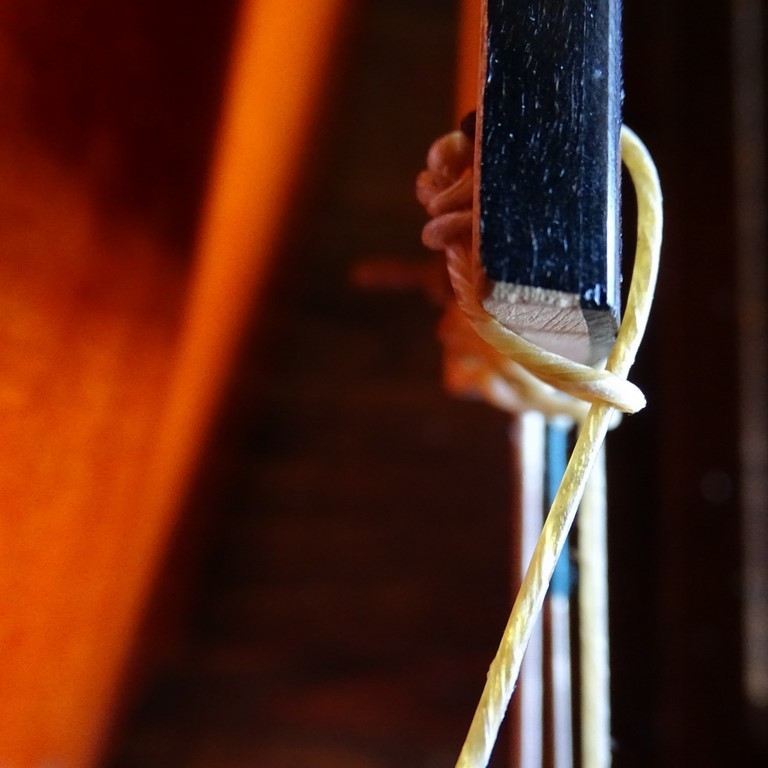
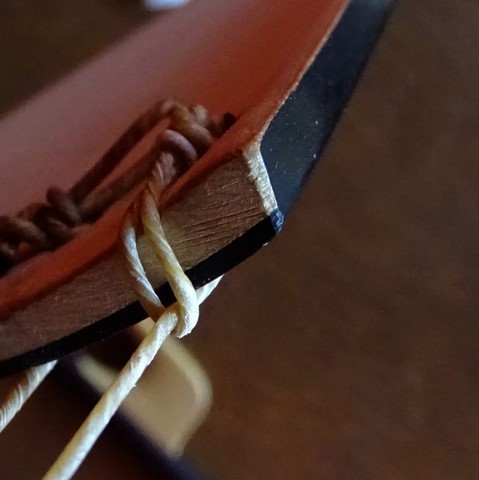
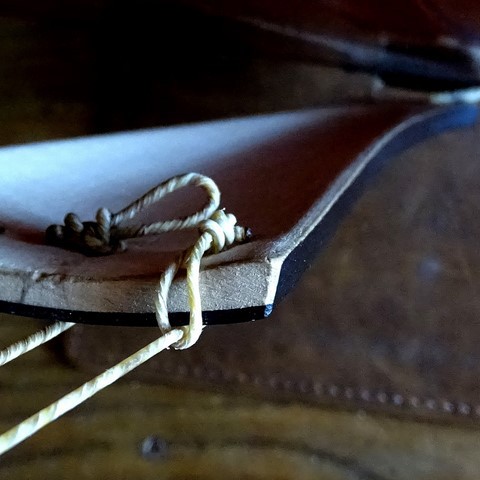
Et voila, c'est pret!
.
